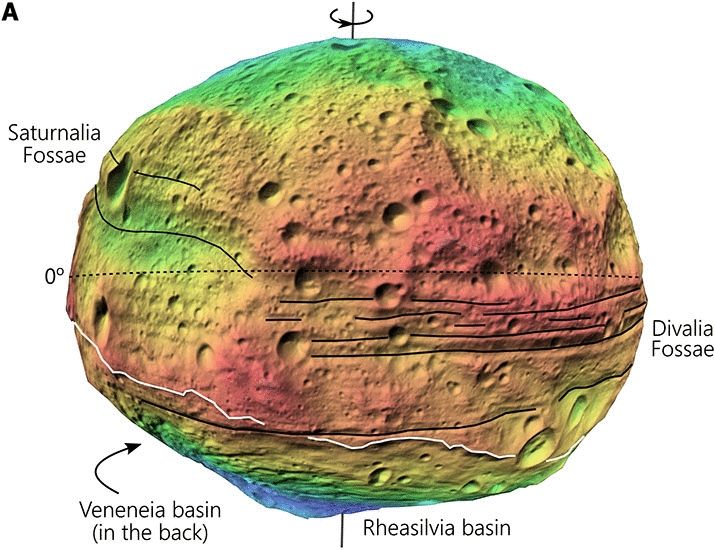
jupiterhansen.com

🧪🔭🪐
We show that Vesta’s giant equatorial troughs—Divalia Fossae—likely formed from spin axis reorientation and despinning as a long-term consequence of the two massive impacts near the south poles. 🪨⚒️
www.science.org/doi/10.1126/...
Andalusite:
- An aluminosilicate mineral
- A polymorph of kyanite and sillimanite
- A common low grade metamorphic mineral
- Used in the production of high temperature ceramics
- Named after Andalusia in Spain #minerals

Andalusite:
- An aluminosilicate mineral
- A polymorph of kyanite and sillimanite
- A common low grade metamorphic mineral
- Used in the production of high temperature ceramics
- Named after Andalusia in Spain #minerals

How many people had to sign off on this figure?
The editor, one hopes, the reviewer(s)? The copy editor?
What had to happen for THIS to get published?
& more to the point, why we should take you seriously at all going forward?
www.nature.com/articles/s41...

How many people had to sign off on this figure?
The editor, one hopes, the reviewer(s)? The copy editor?
What had to happen for THIS to get published?
#wangfukcourt
At least 36 people are killed and 279 reported missing in Wang Fuk Court, Hong Kong tower block fires

#wangfukcourt






youtu.be/HBSMDVs9VKI?...

youtu.be/HBSMDVs9VKI?...
If you are interested in learning about volcanoes with a front row seat, reach out!
If you are interested in learning about volcanoes with a front row seat, reach out!

Here is part of the body of quite a large trilobite known as Paradoxides spinosus. This specimen comes from the Middle Cambrian (Drumian) Jince Formation from the Czech Republic. Paradoxides is one of the largest trilobites known from the Cambrian period.

Here is part of the body of quite a large trilobite known as Paradoxides spinosus. This specimen comes from the Middle Cambrian (Drumian) Jince Formation from the Czech Republic. Paradoxides is one of the largest trilobites known from the Cambrian period.
None of these are detailed. None of these are actual research questions.
We are no longer the target audience of Google Scholar.

None of these are detailed. None of these are actual research questions.
We are no longer the target audience of Google Scholar.
These are among the first images from the newly launched NASA ESCAPADE* mission—showing the port solar array from the Gold twin spacecraft in both visible light and infrared.
*Escape and Plasma Acceleration and Dynamics Explorers
(1/2)

These are among the first images from the newly launched NASA ESCAPADE* mission—showing the port solar array from the Gold twin spacecraft in both visible light and infrared.
*Escape and Plasma Acceleration and Dynamics Explorers
(1/2)
If you want to propose your favourite planetary science image of 2025, place it below with a link to the source and when it was published.

If you want to propose your favourite planetary science image of 2025, place it below with a link to the source and when it was published.
Each bookcase is a blog post with photos of each and every shelf. If you see something you like, fill out the contact form!
#ASPLIbrary

Each bookcase is a blog post with photos of each and every shelf. If you see something you like, fill out the contact form!
#ASPLIbrary

The Planetary Research Blog aims to fill this void.

The Planetary Research Blog aims to fill this void.
At least USRA/LPI isn't hiding it.
But is this what our community wants? Or deserves? I don't think so.

At least USRA/LPI isn't hiding it.
But is this what our community wants? Or deserves? I don't think so.

*A guy walking by said to his companion, “That looks incredibly dangerous.” 😅
*A guy walking by said to his companion, “That looks incredibly dangerous.” 😅




go.nature.com/4nHZmoM

go.nature.com/4nHZmoM

